Page 4 of 4
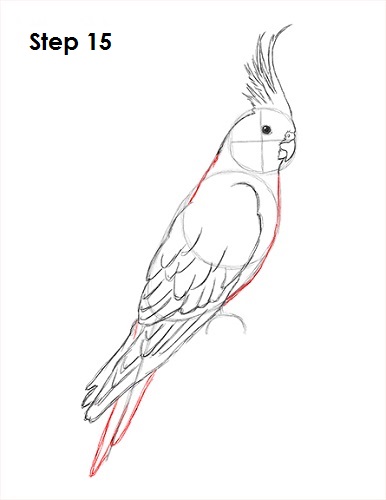
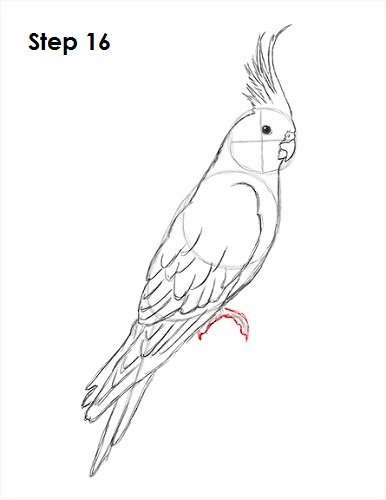
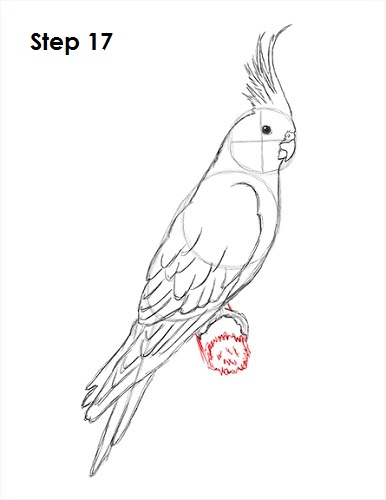
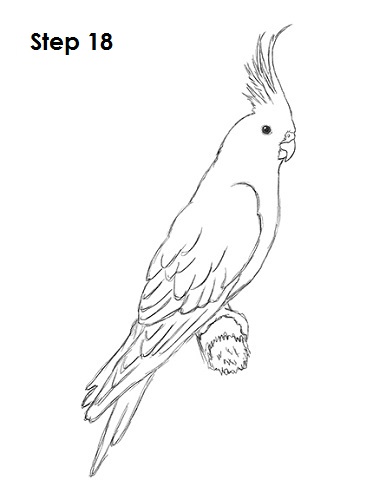
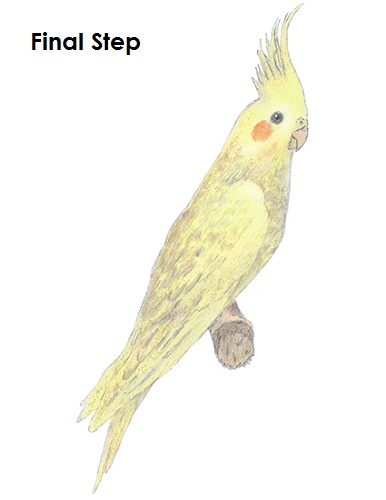
Cockatiels come in a variety of colors and patterns, so color yours however you'd like. If your cockatiel will be yellow, add a bit of orange to the shadows and darker sections. Use a darker orange for the cheek patch and black for the eyeball. Use light yellow and peach for the cockatiel's beak and feet. Continue adding yellow to the entire body. Use different shades of yellow as you color for a more three-dimensional look. Using a single shade of a color can sometimes make a drawing flat.
Coloring can be time-consuming, so be patient and take breaks as you draw. You can also skip the coloring for a white or albino cockatiel and a much easier drawing. Use brown and gray for the branch below. Keep in mind the shadows. Add a bit more orange to the sides of the cockatiel's body for a rounder look. You can stop here for a yellow or lutino cockatiel or continue adding color for a different variety. Add more gray along the wings and body for the pied or cinnamon variety cockatiel. Use light strokes as you add the gray to the body.
It's a good idea to use reference for a more accurate drawing. If you have a pet cockatiel, try duplicating its feather pattern on your drawing. Remember to pause the "How to Draw a Cockatiel Video" after each step to draw at your own pace.
Thanks for watching! Subscribe to the How2DrawAnimals YouTube Channel for a new tutorial every Tuesday.
To learn how to draw popular cartoon characters, visit EasyDrawingTutorials.com.







